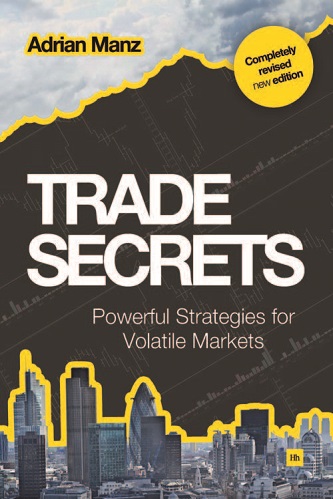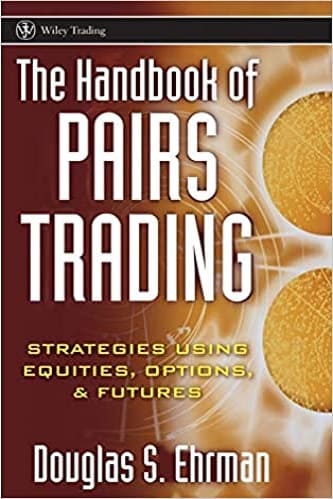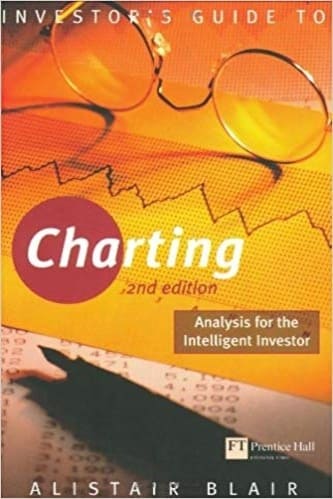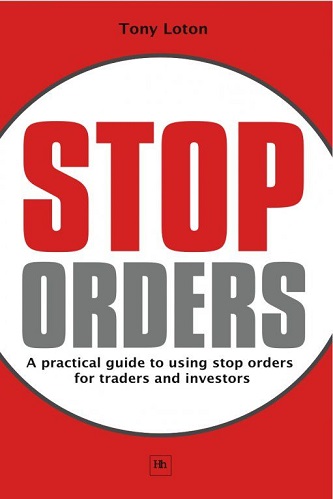Articles
Trading Forex: Fundamental Analysis By Imran Mukati
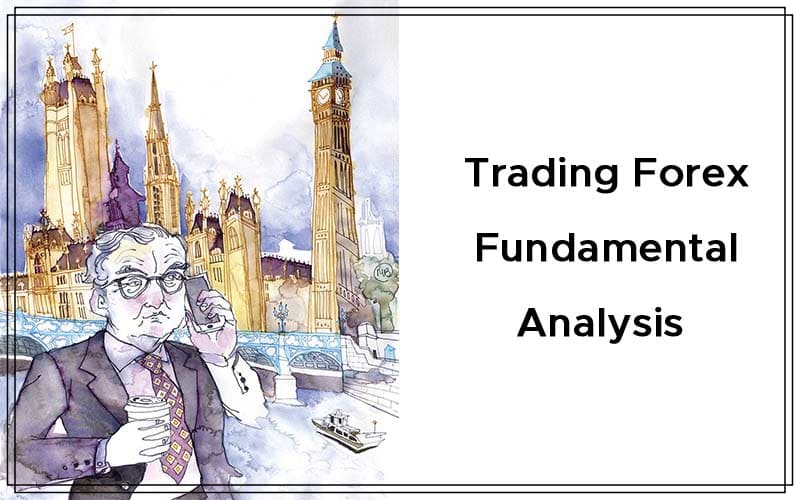
Forex traders need to keep an eye on fundamental data such as interest rates, central bank policies, and economic data. In this article, we’ll take an in-depth look at these fundamental variables. Just as in equity trading, there are two basic approaches to formulating forex trading strategies. In my previous articles in this series, I already introduced you to technical analysis. Its counterpart is fundamental analysis, which looks at issues like interest rates, central bank policies, and economics to make trading decisions. In this way, it is similar to dissecting the financial statements of a company when deciding whether to buy its stock.
Fundamentals Have Their Place
Because of the nature of the underlying mechanics, fundamental analysis is geared more for longer-term trading. Technical analysis tends to be more appropriate for short-term trading. However, it is possible to combine aspects of both. For example, fundamentals might indicate the future course a currency is likely to take; the only question would be the exact timing of the move. Technical indicators can provide the signals to show when that movement is beginning. In some cases, collective trader psychology might mean following the technical indicators even when the underlying fundamentals don’t justify the price movement.
As an example, billionaire hedge fund mogul George Soros—who is famous for, among other things, making fantastically profitable trades on the Thai baht and the British pound, earning a $1 billion profit on a $10 billion trade on the latter currency—bet billions on gold in 2010. Even though he knew that the fundamentals pointed to a bubble in gold prices, the technical indicators showed that traders were nevertheless flocking to buy, and he made money buying the upward trend.
Central Banks And Interest Rates
One important factor that distinguishes forex from equities is the existence of central banks. While companies take actions intended to affect the price of their stock, in most cases they have little power to affect it substantially; the market makes those decisions. A currency, however, is not just something to be traded in the marketplace; it is the economic lifeblood of a country. Valuations that are too strong or weak have real and important impacts on the economy, so each central bank is charged with governing its currency.
First, I’ll talk about who the players are. Just about every country has a central bank, but you won’t be trading every currency. The central banks that govern the majors are:
- US Federal Reserve
- European Central Bank
- Bank of Japan
- Bank of England
- Reserve Bank of Australia
- Swiss National Bank.
Don’t assume that central banks are focused solely on currency values—their responsibilities are much more complex than that. The US Federal Reserve (the “Fed”) has by law a dual mandate: to maximize employment while controlling inflation. (The Fed’s standard for controlled inflation, by the way, is 2% to 3%.) At the end of the day, any central bank wants its nation’s economy to grow as fast as possible while minimizing negative economic effects like bubbles (consider the effects of the popping of the US housing bubble in 2008); recessions or depressions; and inflation or deflation. Basically, they are looking for the Goldilocks standard in their economy—not too hot, not too cold, but just right.
There is one major tool that central banks use to pursue these goals, which is normally labeled monetary policy. Informally you may hear it called setting interest rates, but this is misleading in that the central bank doesn’t simply say, “This is the new rate,” despite the impression you might get from the news media in the wake of, for example, a meeting of the Federal Reserve Open Market Committee (FOMC). The reality is more complex.
Understand that an interest rate is basically the price of money—specifically, the price to borrow it. In simple terms, if you are a saver, you give your money to a bank. The bank, which will be using your funds to make loans, pays you a certain interest rate. If you are a borrower, the bank will charge you a certain interest rate as well. That rate is, needless to say, quite a bit higher than what the saver is receiving. Part of the difference is what the bank uses to cover its expenses and make a profit; another part is a risk premium—an amount paid to cover the risk that some borrowers will fail to repay their loans by making up those losses. That’s why a person or a company that is a poor credit risk will pay more for a loan (if they can get one at all) since they are a higher risk.
There are varying levels of demand for money (loans) at different interest rates. If you want to borrow money to buy a boat, remodel your house, or expand your business, and the bank tells you the interest rate will be 18%, you will probably decide that borrowing simply isn’t worth the cost. Instead, you’ll save up the money (and savings rates, by the way, will probably be quite generous) or just forgo whatever it is you were going to purchase with the loan.
But what if the bank is lending at 0.5%? If you can get a loan at that rate, you’ll probably sign up right away. After all, that’s nearly free money! So what we find is that there are different levels of demand for borrowing at different interest rates.
Look at the table in Figure 1 for some hypothetical numbers. Here you see how much borrowers are willing to borrow (demand) and how much commercial banks have available to lend (supply) at each interest rate level. Remember that banks are taking deposits from savers and using that money to make loans. However, a bank can’t loan out everything it has. Central banks establish reserve requirements, which dictate what proportion of its deposits a commercial bank has to have on hand as cash or other liquid assets, like securities.

FIGURE 1: DIFFERENT LEVELS OF DEMAND FOR BORROWING AT DIFFERENT INTEREST RATES. Here you see hypothetical numbers to show you how much borrowers are willing to borrow and how much commercial banks have available to lend at different interest rate levels.
If a bank has $1 billion in deposits and the reserve requirement is 10%, the bank can’t loan out more than $900 million; it must keep at least $100 million. This, by the way, is another tool in the central banker’s toolbox. Adjusting reserve requirements up or down can free up more money for loans or reduce what’s available, causing money to flow into or out of the economy. It’s also part of what caused the 2008 financial crisis. Some of the liquid assets commercial banks were holding as part of their reserves were mortgage-backed securities (MBSs). When it became clear that no one really knew how many bad mortgages were rolled into those MBSs and therefore what they were worth, the banks no longer knew what they had in reserves. Their response was to hold onto their cash by basically stopping all lending.
Going back to the table, 4% is the hypothetical equilibrium rate—the rate at which commercial banks have as much money to lend as people and companies want to borrow. While banks might love to make even more loans at 1%, 2%, or 3%, since their profit margins are basically the same at each rate, they don’t have the reserves to do so.
Enter the central bank, which, among other things, acts as a bank for banks. Central banks charge interest to commercial banks for loans as well. If they are loaning at 1%, commercial banks might need to charge 3% or 4% to be profitable. But if the central bank cuts the rate it charges banks to 0.5% or 0.25%, suddenly the commercial banks can loan money at 1% or 2% and still be profitable. In essence, the central bank makes up the shortfall in the available lending pool, which pumps money into the system and drives rates down. Increasing rates works in just the opposite manner.
You should make it a habit to know the central bank targets for GDP growth and inflation in each country whose currency you plan to trade.
Why don’t central banks just leave rates low all the time, encouraging borrowing and therefore causing the economy to expand constantly? Well, there’s a little matter of inflation. When more money enters the system, it means people and companies can make more purchases, which means there are more dollars competing for basically the same amount of goods. It also means expanding companies need to hire more workers, and with more competition for basically the same number of workers, wages start rising. This drives inflation, which, if it gets out of control, is very hard to rein in and can destroy an economy. However, a certain amount of inflation is a necessary evil, because it comes along with a growing economy. You might have wondered earlier why the Fed has an inflation target of 2% to 3%. Wouldn’t zero inflation be better? It might seem like a great thing, but it would mean a stagnant economy. Inflation tends to be low or nonexistent—or even turns negative into deflation—during recessions.
That leads us to the concept of real and nominal interest rates. The nominal rate is the official or declared rate. Let’s say that it’s 5%. However, if you are lucky enough to earn 5% on your money, that won’t be your actual growth in terms of purchasing power. That’s because inflation eats away at the value of your dollar (or your euro, or your pound, or your franc) each year, reducing how much it can buy. So if the inflation rate is 3% while the interest rate is 5%, the real interest rate or the actual increase in purchasing power is only 2%.
Clearly, what matters in trading is the real rate. A currency with a nominal rate of 6% might look great until you find out that the inflation rate is 5%, at which point the one with a 4% nominal rate but only 1.5% inflation looks a lot better. Because interest rate and inflation conditions are likely to differ from country to country, there is trading value in the differences. If the real rate on the yen is 1% while the Swiss franc has a real rate of 2%, holding the franc will be more profitable thanks to the 1% differential. In other words, it becomes practical to borrow yen to buy the franc. Since the franc is more attractive, traders will tend to flock to it over the yen, which means the price will rise.
Fundamentals In The News
Fundamental analysis relies heavily on the news. Governments, central banks, and independent entities like the Conference Board, which produces the monthly US Consumer Confidence Index, are constantly announcing economic data. Central bankers also announce policy decisions; in the US, analysts who follow the Federal Reserve and parse its announcements are nicknamed Fed watchers. Because the US dollar is so important in the forex markets, US economic data is king. The top five information groups, ranked beginning with the highest significance to forex trading, are:
- Nonfarm payroll report
- Retail sales
- International trade reports
- Federal Reserve policy decisions
- Consumer Price Index
Just as analysts do with corporate earnings announcements in the equity markets, observers will anticipate specific economic numbers prior to the release of the data. This provides an opportunity to play the news based on how the actual numbers compare to the expectations. If the numbers come out as expected, the currency is likely to be flat—any buying or selling attributable to the data has already been done. This is known as pricing the data into the market. If, however, the numbers are better or worse than expected, you can expect to see buying or selling (respectively) as traders adjust their positions accordingly—and sometimes, frantically.
Naturally, there are two ways to play economic data announcements and other news: proactive or reactive. Proactive trading means placing your trades beforehand, in expectation of what will happen once the news is released. This is most useful when you have reason to believe the actual numbers will not match the expectation (usually called the consensus); you can be in position to profit when the currency price comes to you in reaction to the news. While this is the more profitable approach, it is also much more difficult and will produce some losses on those occasions when you are inevitably wrong. Reactive trading merely follows the news and trades based on what was released. In this case, you can use limit orders above and below the current trading range so that you can take a long position should the news be positive and the currency rise, or a short position should it be negative and the currency fall.
Suggested Books and Courses About Forex Trading
Be aware that because trading volume picks up substantially just before and after such announcements, a phenomenon known as slippage will occur. This is a condition in which prices change so quickly that it becomes difficult to enter a trade at exactly the price you intended. In order to reduce trading volume and mitigate slippage, brokers tend to increase the spreads on trades around the time of significant announcements. By raising the price of forex trades temporarily, brokers try to keep casual traders out of the market and limit activity to those who are serious about trading the news.
Economic Fundamentals For Forex Trading
As we said in the introduction, fundamental analysis usually takes a longer view of trading. That is because many of the economic factors that affect currency valuations are slower-moving. The first factor is economic growth. Determining whether an economy is growing (or contracting) and how quickly means measuring its size, and the size of an economy is measured by its gross domestic product (GDP). GDP is composed of four elements:
- Consumption
- Investment
- Government spending
- International trade balance
Consumption is essentially consumer spending, which as we’ve heard over and over is the largest component of the US economy—about 70%. Investment is not the type of investment represented by buying stocks and bonds (or currency pairs); rather, it is capital investment—the purchase of assets, like factories and machinery, by companies. Government spending is self-explanatory, and the international trade balance is simply the value of exports minus the value of imports. (The trade balance can either add to or subtract from GDP. The US has run a trade deficit for many years, meaning we import more than we export; major exporters like China run a trade surplus.)
Once we measure the size of an economy, it becomes possible to measure it each year and determine the net change. An expanding economy is a great thing, but obviously that doesn’t happen every year. If the economy contracts for two (or more) consecutive quarters, it is said to be in a recession. Growth rates of 2% to 4% have been typical for the US, which is a mature economy, but younger expanding economies like that of China may grow from 7% to 9% or even more each year. Remember, an economy that is hot and growing fast will produce a good bit of inflation, and for that reason, central banks in emerging nations are often quite comfortable with 6% and 7% inflation rates.
Speaking of inflation, just as there are nominal and real interest rates, there is nominal and real GDP growth. Just because the economy grew at a rate of 5% last year doesn’t mean 5% more goods and services were produced. If inflation was 3%, those goods and services increased in price 3%, but the same quantity was produced. Real GDP growth would be only 2% in this case.
GDP growth and interest rates have an inverse relationship. That means that as interest rates rise, GDP growth will fall. Less money being borrowed means less expansion of companies and fewer new companies, and therefore less economic activity. Conversely, central banks lower interest rates in order to spur economic growth. All of this is done with one eye on the inflation rate to make sure it doesn’t get out of hand.
You should make it a habit to know the central bank targets for GDP growth and inflation in each country whose currency you plan to trade. Some very important economic data announcements won’t mean nearly so much to you if you don’t. The international trade balance is important as well. In discussing the basics of forex, one of the reasons for currency trading I mentioned was the exchange of currencies by multinational companies. To recap, a US company that manufactures in China and sells in Europe has to trade dollars for yuan to pay workers and suppliers in China (a transaction that pushes down the value of the dollar) and trade euros for dollars to bring profits home (which pushes up the value of the dollar). All of these many transactions each day have a real collective impact on the prices of currencies, so it can be expected that a country with a large trade deficit will tend to have a weaker currency.
The existence of a trade deficit isn’t necessarily a bad thing in and of itself. Successful and strong economies—the US topping the list—routinely run such deficits. This is in part because profits from transactions taking place in foreign countries aren’t included in the balance-of-trade calculation. However, the period-to-period change in trade deficits will still tend to affect currency values simply because of the unavoidable need to exchange one for another, as outlined earlier.
Central banks manage the relative strength of their currency against others because overly strong and weak currencies have negative economic effects. International trade is one of the main arenas where this is the case. A strong currency makes a nation’s exports more expensive in its customer nations. When talking about Germany selling Mercedes cars in the US, a vehicle that costs 20,000 euros (wholesale, of course!) costs $26,000 when the euro is worth $1.30 but $32,000 when the euro is worth $1.60.
The reduced buying power of the dollar against the euro means US consumers can’t afford as many euro-denominated goods, and European exports to the US will fall. That’s not good for European companies that are exporters! This is why China goes to great lengths to keep its currency value low. Its economy relies on exports, so it wants its products to be cheap in every country to which it sells its goods. Of course, a currency can’t be allowed to get too weak, or that nation’s consumers won’t be able to afford things that are imported—and every country imports something. In the US, a big one is oil, which can get more expensive the weaker the dollar gets. Since American consumers (who are also voters) get up in arms about high gasoline prices, the Fed has to keep the dollar strong enough to keep oil prices at least somewhat in check.
Clearly, then, central bank policies are an important component of currency values over the short and long terms, and bear a close watch. Capital flows or movement of money between countries also bear watching. These flows can take a few different forms. The obvious one is what takes place in the various financial markets—stocks, bonds, and forex. But money can also flow into a country via direct investment such as when a foreign company builds a factory, mine, or distribution center there, and by acquisitions of domestic companies by foreign buyers. The flow of capital into a country will generally cause its economy to expand and its currency to appreciate.
Finally, it is important to consider political stability. This can mean many things, from orderly government transitions—that is, via fair and open elections rather than coups or rigged elections—and consistent government policies to the lack of conflict internally or with neighbors. Investors like predictability, so countries that have a reputation of arbitrary actions—like the nationalization of industries or government confiscation of foreign assets—will suffer. Investors either won’t do business there at all, or if they do, they will demand a heavy risk premium. This reduced demand for the currency in question will drive its value down.
Speaking of political stability, on that note I’ll close with the mention of the US dollar and its resilience as a reserve currency. Many pundits have long made noise about how the dollar would gradually disappear as the world’s primary reserve currency—one of the factors that makes it so dominant in the forex markets. First it was forecast to be replaced by the yen until the Japanese economy hit the doldrums in the early 1990s—a result of demographics, specifically its aging population. As its population gets even older, Japan’s economic woes will grow, not fade away, so the yen is no longer a candidate.
Next it was the euro, the currency of the collective of European Union countries. But the 2008 financial crisis revealed the cracks in the euro’s foundation, namely that weaker economies in the European periphery (think Ireland, Greece, and Portugal as examples) were enjoying interest rates in the bond markets that resulted from the strength of their wealthier northern neighbors, like Germany and France. That strength was based on assumptions that stronger EU nations would bail out weaker ones should the need ever arise, which it did. That bailout is taking place now—up to a point. The danger is that if larger but still-troubled economies like Spain or Italy run into crisis, the bailout costs will be so high as to probably be unsustainable. That would severely damage the euro or end it altogether.
The US Dollar Still Reigns
So it was that even after the credit rating of US sovereign debt was downgraded in 2011, and even after the Fed repeatedly printed money to dump into the economy, rates on US Treasury notes fell to historic lows of under 2%. Despite all the hand-wringing over the years about the US dollar, when push came to shove, the flight to quality still landed on US shores. While no one can guarantee the future, let this serve as an important lesson that the chorus of “experts” you hear on a daily basis won’t always be right.
Imran Mukati is the Managing Director of fixed income securities at Fairbridge Capital Markets, Inc.

